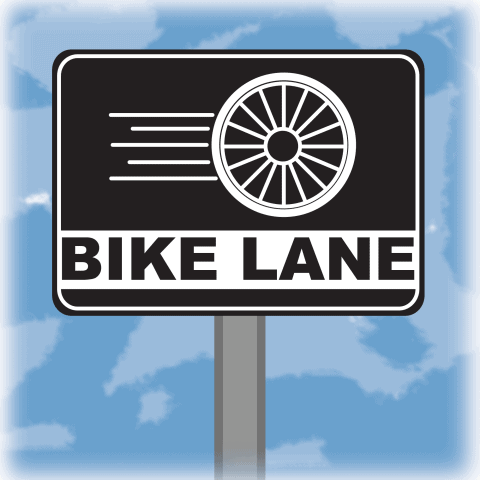 Saskatoon city council has decided to install two segregated bike lanes on 4th Avenue and 24th Street in downtown Saskatoon. This positive development will be beneficial to Saskatonians, especially in the midsts of biking season.
Saskatoon city council has decided to install two segregated bike lanes on 4th Avenue and 24th Street in downtown Saskatoon. This positive development will be beneficial to Saskatonians, especially in the midsts of biking season.
The motivation behind this action involved a petition with signatures from more than 1,900 people — showing that there is a desire and a need for this development in our fine city.
These new bike lanes are to be separated from traffic, placed in between the sidewalk and parked vehicle lanes. There is a need for the allotment of room so that cyclists can pass unharmed through this lane space, which will hopefully prevent anyone from getting knocked out with an opening car door while biking.
I have been on both the side of the biker and the driver when it comes to cyclists in Saskatoon. Being the driver includes the irritating moment when there is a person biking in your lane and blocking your path. Sometimes you almost want to run the biker over because they’re so damn slow — no offense, but it’s true.
On the flip side, last year while biking to work downtown someone actually did run me over. Maybe it was my own fault because I didn’t use those hand signals — I can never remember which one means what — but I don’t think I was biking that slowly.
Luckily I was wearing my helmet and was unharmed. My sentiments could not be shared by the driver, who cried following the incident. My point being, there are several vehicle accidents with bicycles in Canada each year.
Approximately 7,500 cyclists are severely injured annually in Canada according to biking statistics from caa.ca. Most of these accidents occur at intersections or major traffic areas. Having separate lanes allows for cycling in cities to be safer, avoiding many unnecessary accidents.
With safety concerns alleviated to some extent, segregated bike lanes will inspire people to bike more often. The likelihood of someone biking to work or school will increase significantly if they have a safe and secure area to do it in.
According to statistics from care2.com, a site dedicated to community building and healthy living, bike lanes reduce the amount of injuries by 50 per cent. In cases where the bike lanes are totally segregated from traffic, injury rates dropped by 90 per cent.
While this is safer for cyclists, it is also better for motorists. Like many outdoor activities, bikers risk injury when out and about, especially when cycling in traffic lanes. Having segregated lanes for cycling and driving will mean less accidents.
Implementing bike lanes will obviously equal more biking, which equals less driving. Less driving is both good for peoples’ health and for the environment — not a bad idea considering that North America is facing an obesity crisis and the world is facing an environmental one.
Cycling decreases a person’s carbon footprint by releasing less fossil fuel into the environment. According to National Geographics’ Green Guide, the worst type of pollution is engine warm-up — meaning that short trips by motor vehicles actually cause the most pollution.
Small journeys can easily be made by bike and, according to National Geographic, replacing a short car ride with a short bike trip can reduce a person’s household carbon emission by six per cent — not to mention money being saved on gas.
One downfall of bike lanes in Saskatoon is that our climate is much different than that of Montreal or Vancouver. Realistically, bike lanes will not be utilized as much all year round as they would be somewhere else. Our extremely harsh winters are not ideal for long bike rides or cycling to work — especially when the streets are turned into skating rinks.
After spending time in Montreal this past summer, I saw how incredible a city with fully functioning bike lanes can be, which is why I believe this move is so positive for Saskatoon.
Montreal has lanes on a large majority of their streets, which are utilized by tourists and citizens alike. Other major Canadian cities have bike lanes as well, including Ottawa, Toronto and Vancouver. Even though Saskatoon is a smaller centre, we’re certainly ready to be a little more bike friendly.
While segregated bikes lanes are currently only being implemented on two streets in our city, it is a start. If successful, this could open up for a variety of other developments and more lanes in the future.
Administrators will be reporting back to the mayor and council by April on this issue, and from there the ball — or wheel — will get rolling on construction.
—
Naomi Zurevinski
Graphic: Cody Schumacher / Graphics Editor